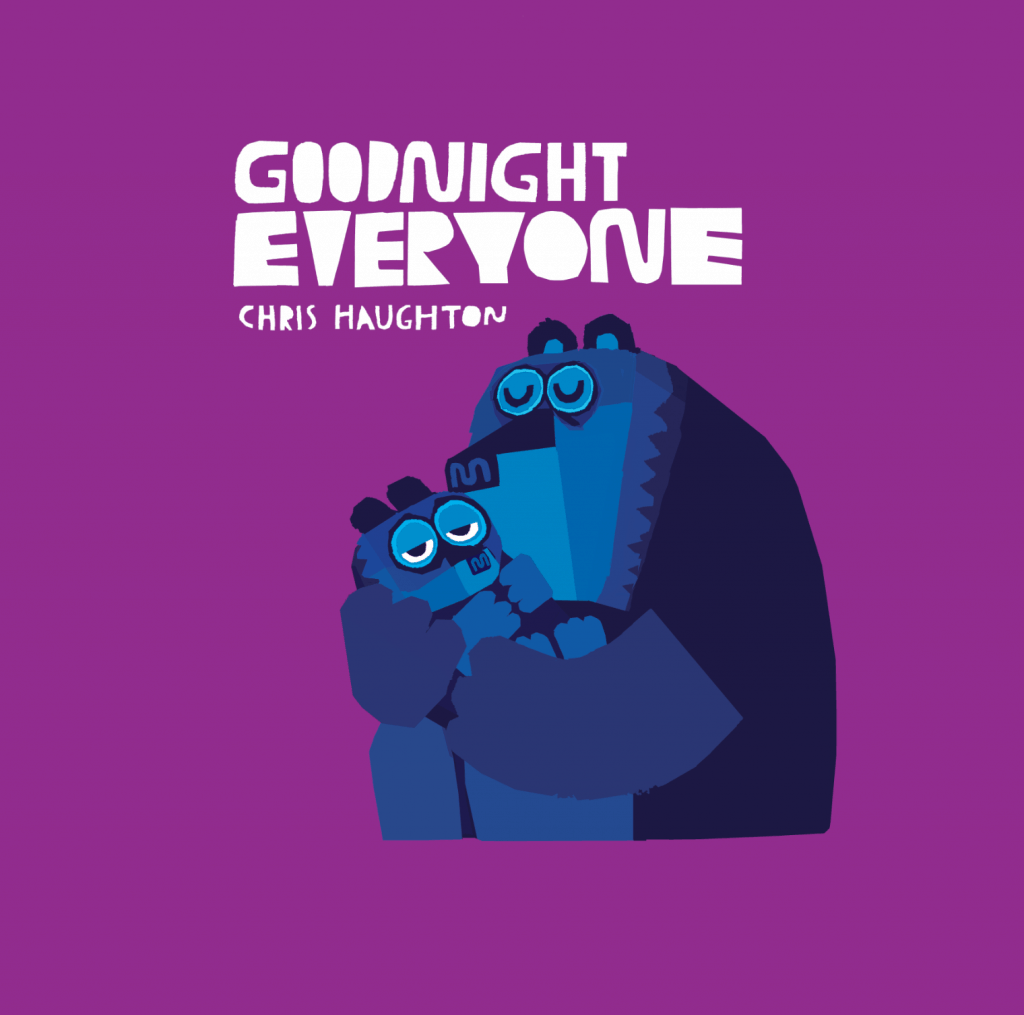
The idea for this book came from visiting my sister Jan’s Montessori school. She was showing me some of the games and toys she uses in her class of 3 and 4 year olds.
She had a series of blocks to explain the powers of ten 1/10/100/1000. 1 square block, 10 stuck together to form line, 100 blocks together to form a plane and 1000 blocks making a 10x10x10 cube. We were talking about how ideas like scale can be shown visually so much easier than can be explained and it occured to me that it could be the perfect subject for a picture book. I like using images rather than words to tell a story visually and this is a very visual idea so it might work. I began thinking of Charles and Ray Eames’ ‘Powers of 10’ and if there was a way to create something similar to this that could be understood by very young children.
In fact I wrote another blogpost about powers of 10 here.
The first idea was a story about an ant who wants to know how big the world is and meets larger and larger animals along the way. She climbs to the top of the grass and meets a beetle, and then to the top of a bush to meet a lizard, a monkey on a tree, and an elephant who takes her to the top of a mountain. Each sequence would be an order of magnitude larger than the last and it would be fun to show the world zooming out all the way out from an ants point of view to the whole world. Note the lizard hidden on the bush in the top right.
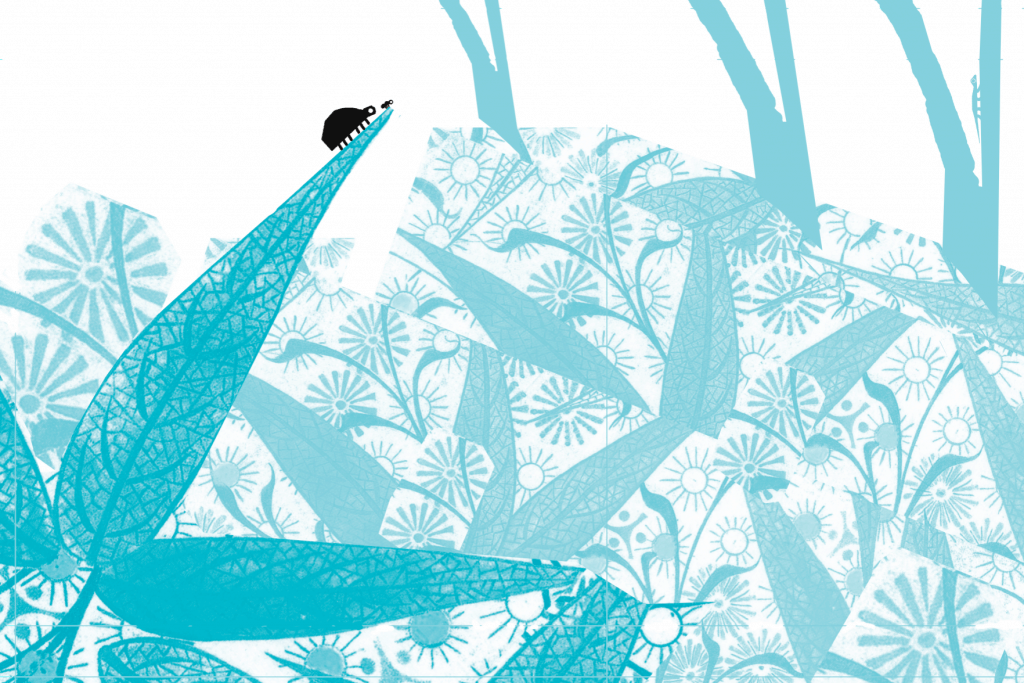
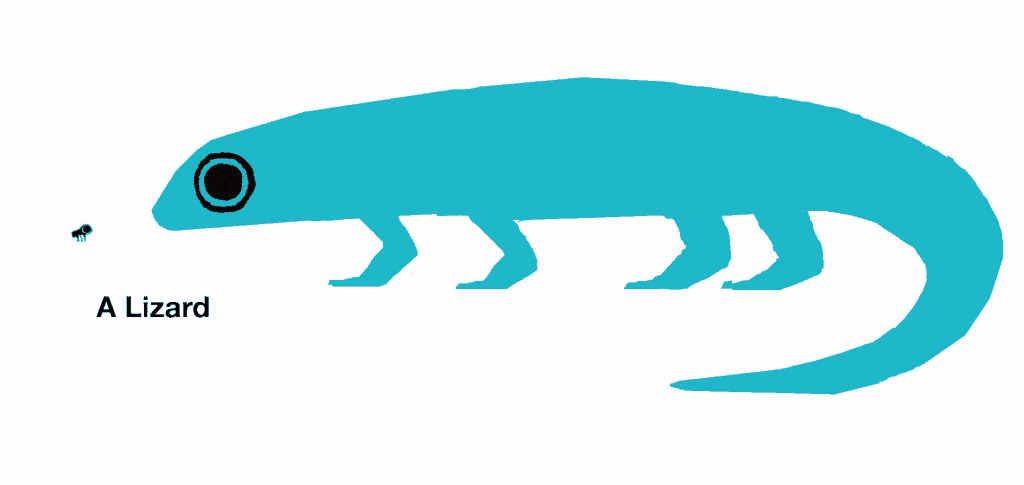
The ant was exploring the world of the very small and there were lots of exciting worlds and things to draw.

However, the story was too linear and so becomes a little boring and predictable after the first sequence. As well as this, the whole premise seemed a little contrived. Ants don’t want to know how big the world is, and neither do very young children, it is much older children who become interested in a question like this. I couldn’t resolve this after more than six months I ended up abandoning the idea and instead created a different book (SHH! We have a plan).
Two years later I came back to it. A simpler way to explain scale to very young children is by acting it out. An action can be made big/bigger/biggest. I decided to abandon the ‘how big is the world’ idea in favour of a simple action simply getting bigger by being acted out by larger and larger animals. Different sized animals in order doing actions such as eating/moving/tickling have potential to build drama to a punchline. I drew it in a sketchbook on the beach.
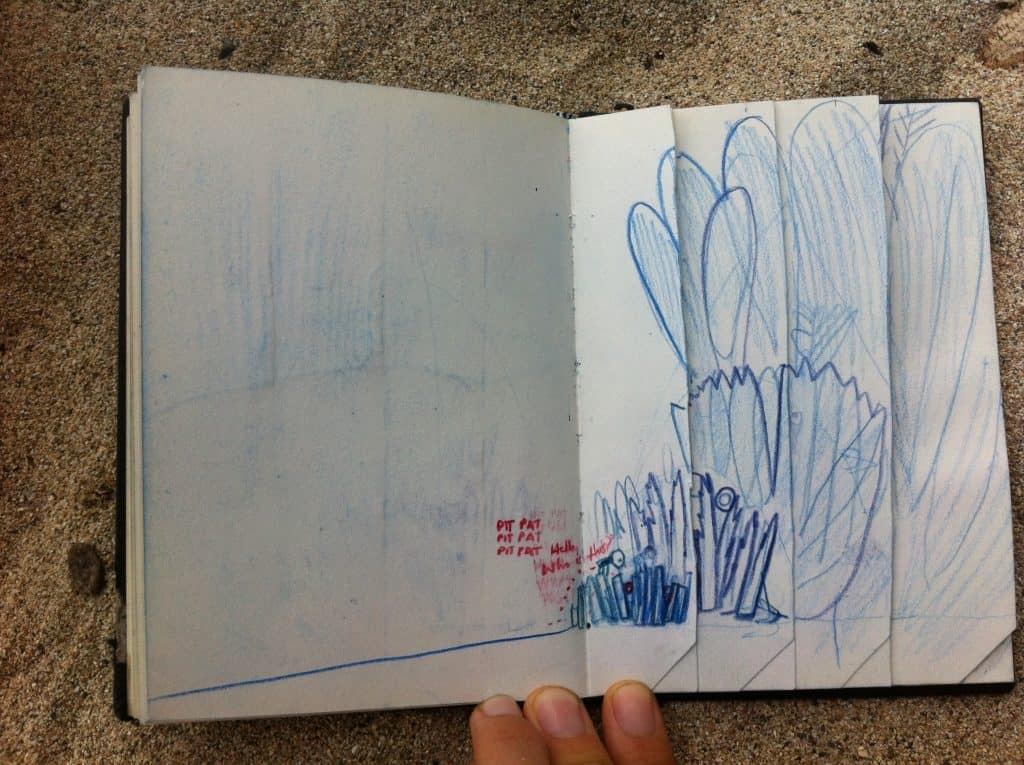
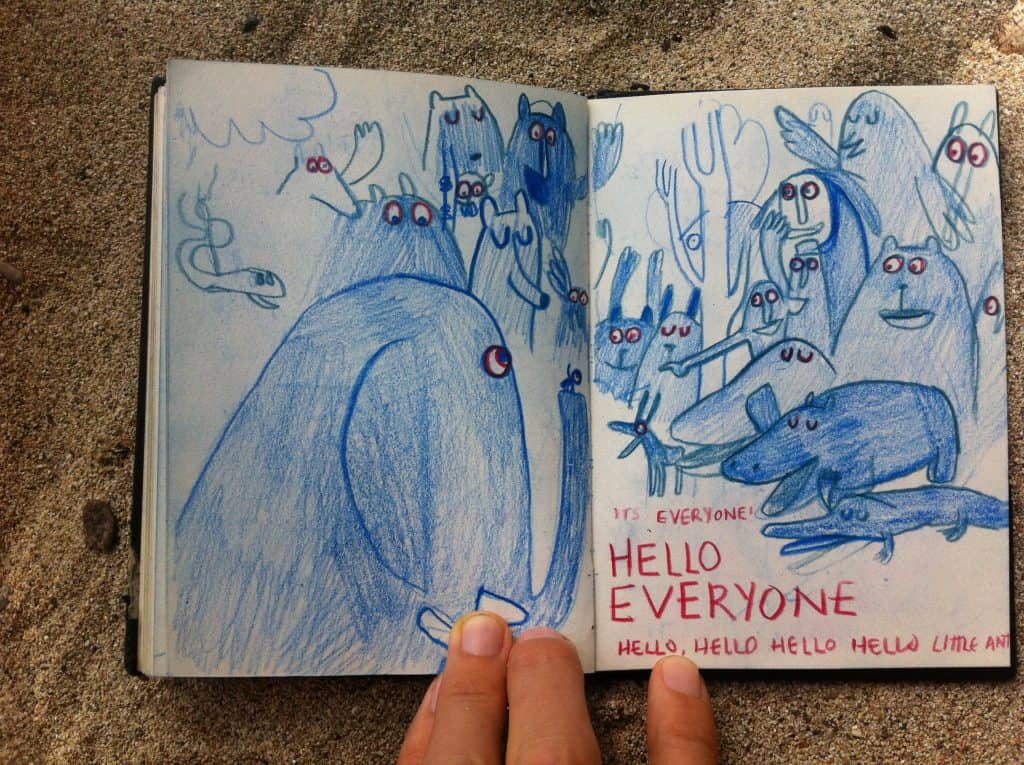
After trying a few actions I hit on the idea of a contagious yawn that went from a tiny ant all the way to an elephant. The cut pages increase in size as the yawning animals get bigger a little like the sequence in the hungry caterpillar and other books. The animals then go to bed and the scale again increases, but this time rather than larger cut pages the scene zooms out further and further until we see all the animals and say ‘goodnight everyone’. The youngest children are not interested in the concept of ‘scale’ but they can notice the animals in the pictures get larger or smaller as the pages turn. It is introduced to them in ways they can understand.
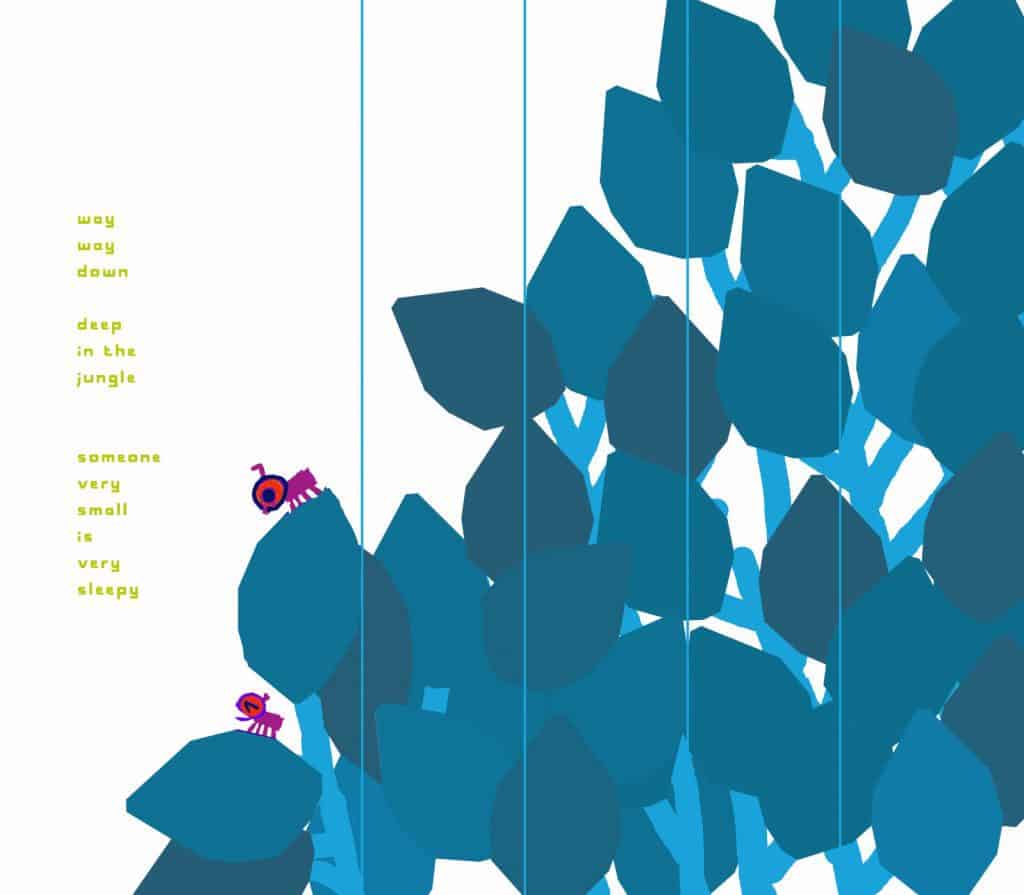
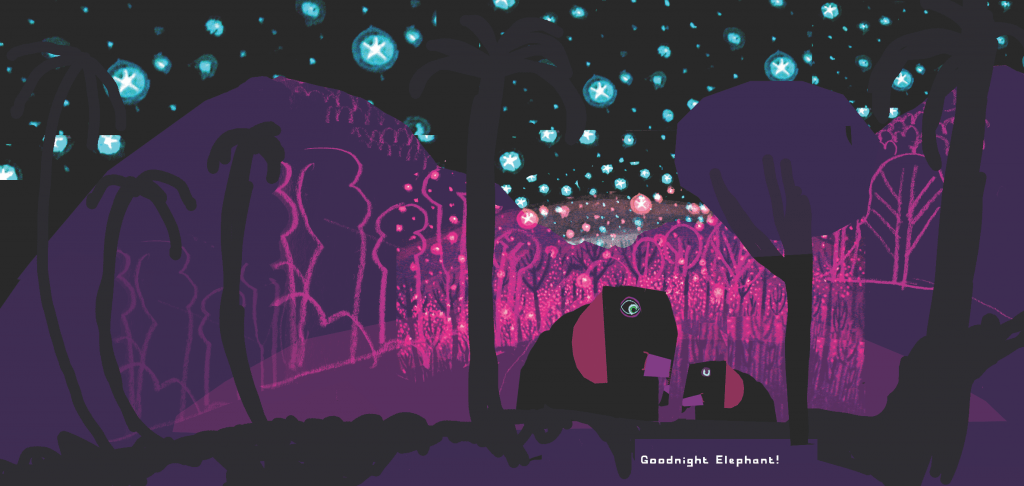
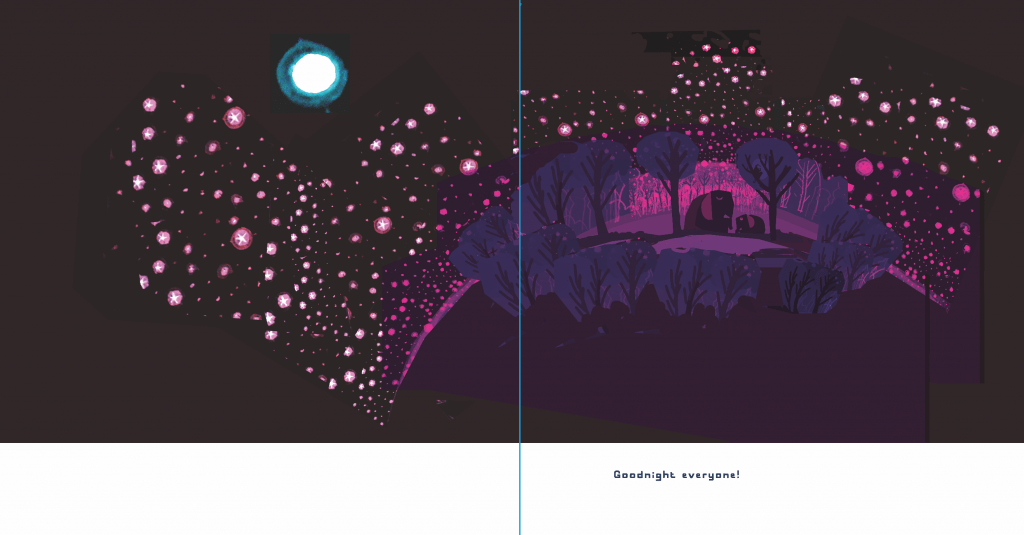
We created a dummy book in pretty much the form it is now but my editor and art director had doubts about it as a book. It didn’t really have a story as such, and was a little different to my other books so it again got shelved and I tried out different ideas…
…an ant who was tickling larger and larger animals.
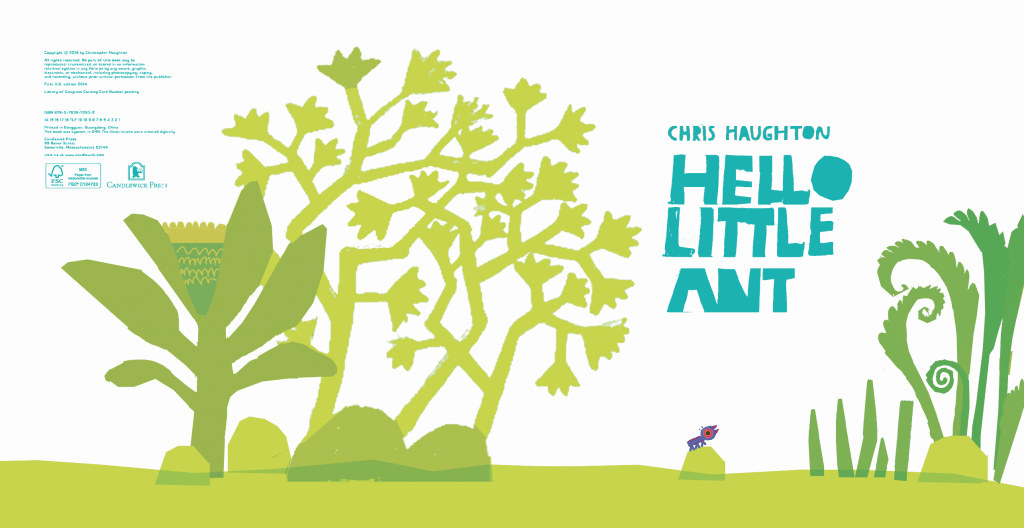
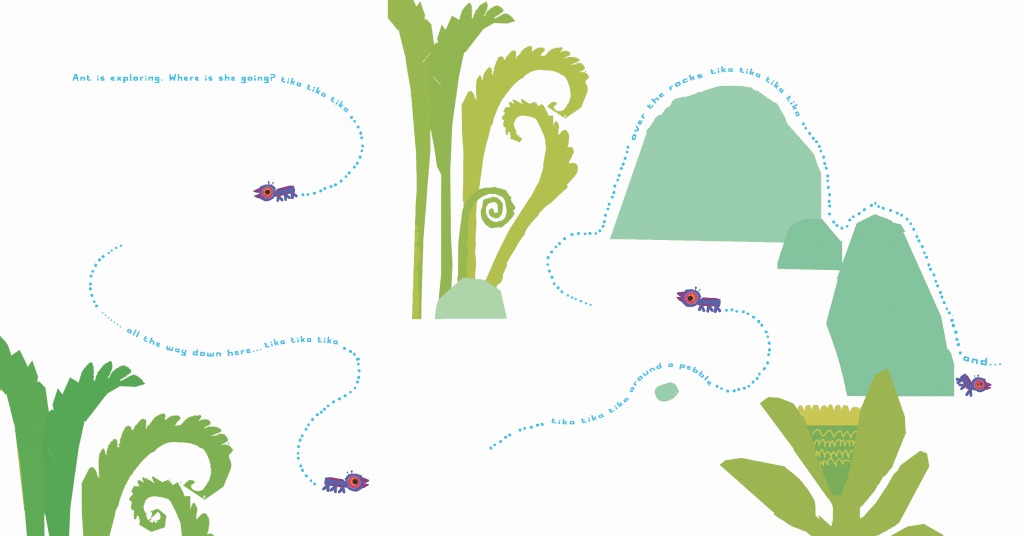

but the ant and insects seem threatening if they are coming to tickle you and are too realistic. So I abstracted them a little…
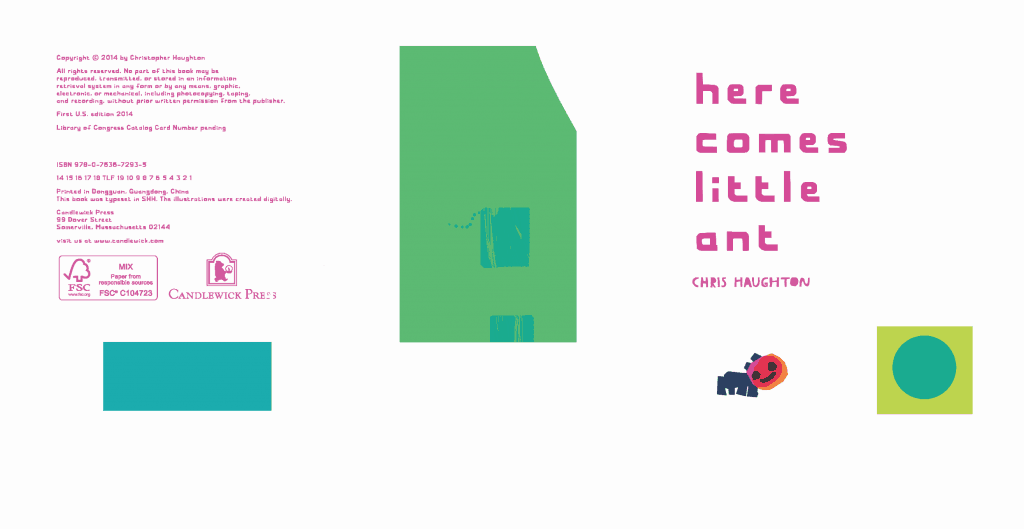
she finds bigger and bigger animals to tickle until she gets tickled back in the end.
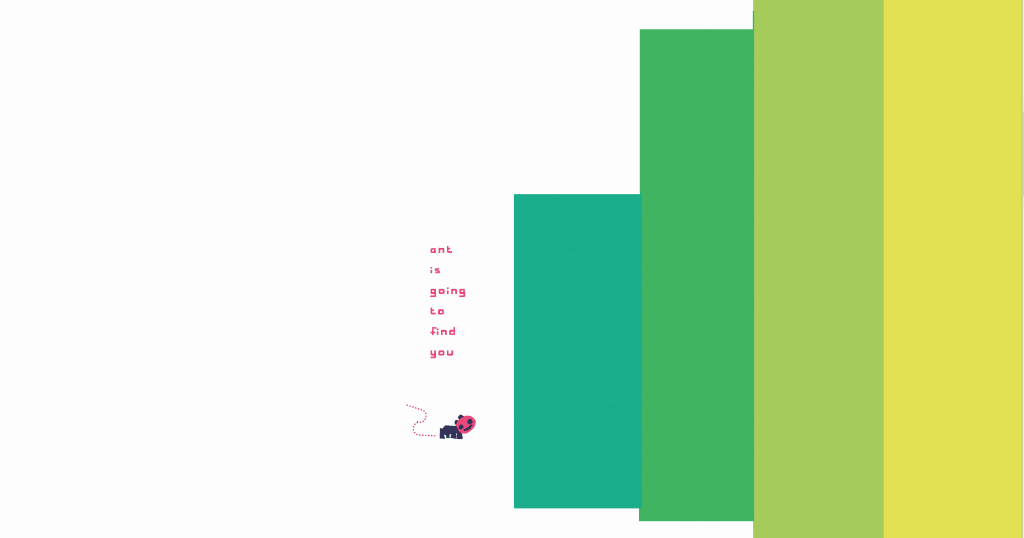

That year I became an uncle, and at Christmas I spent a few weeks with my eight month old twin nieces. I was reading my books to them but at that age they were a little too young to properly follow the story, so we were mainly just pointing out things on the pages. I showed them my dummy books to see what caught their eye. Goodnight Everyone was the biggest hit. They loved the sequence where the larger and larger animals are revealed behind the leaves, and wanted to turn the pages themselves. When they turned them we would make yawning actions and after a few goes they began yawning too. They had been having terrible difficulty sleeping as they had come to Ireland from Australia for Christmas. One of the twins, Joanna, was very bad and it was as if she was fighting sleep, she seemed to be scared of it. Every time she noticed herself nodding off her face had a look of terror and she bawled crying. We just wanted to reassure her that going to sleep was nothing to be afraid of but of course you can’t explain that to a child so young. The only way you could really attempt explain that to a very young child I think is through pictures. I came to the conclusion that doing a picture book with no story and just a reassuring message about going to sleep was a good thing to try to do.
We used the book in their routine to put them to sleep and it worked so well that my sister and mum said really should forget my new idea and go back and publish this instead.
My two guest editors Joanna and May:
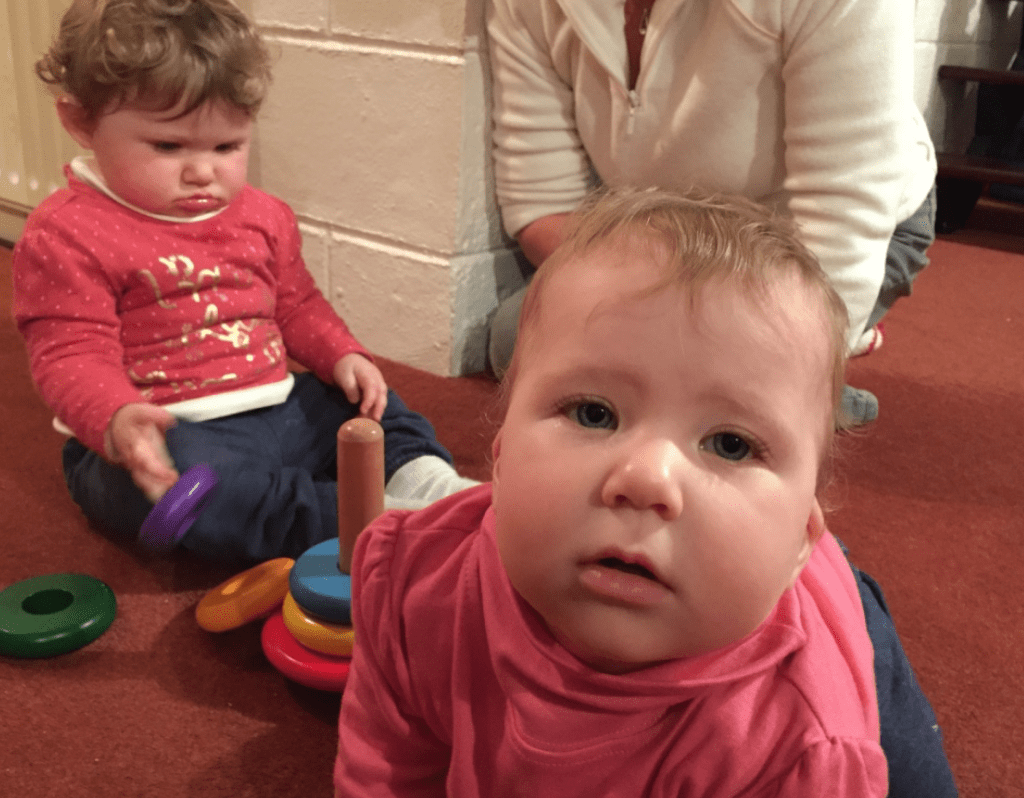
I took it back to Walker after Christmas and we agreed that actually with some tweaks it would work well for the very young. It would be for a younger age group than the other books. As I began creating the artwork I realised that it looked a bit weird having ants and beetles yawning and snuggling up to sleep. Birds and mammals yawn, but insects don’t, so I dropped the ants and beetles (although they are still there on the sleeping mice page). The elephant got dropped too once I realised i could make a link to the Ursa Major and Ursa Minor constellations. The two bears then become the lead characters (thanks to Alice Beniero for inspiring this idea)
ACTIONS
What I try to do in my books is to simplify and reduce the words to communicate to the youngest children. What I am most excited about with this book is that it is told through actions which would be acted out rather than read, so I would hope a small child can understand without any language at all.
The first sequence begins with a small yawn…. which grows larger and larger until everyone goes to bed.
The final sequence begins with a snore…. which grows larger and larger until little bear gets a kiss goodnight and everyone is asleep.
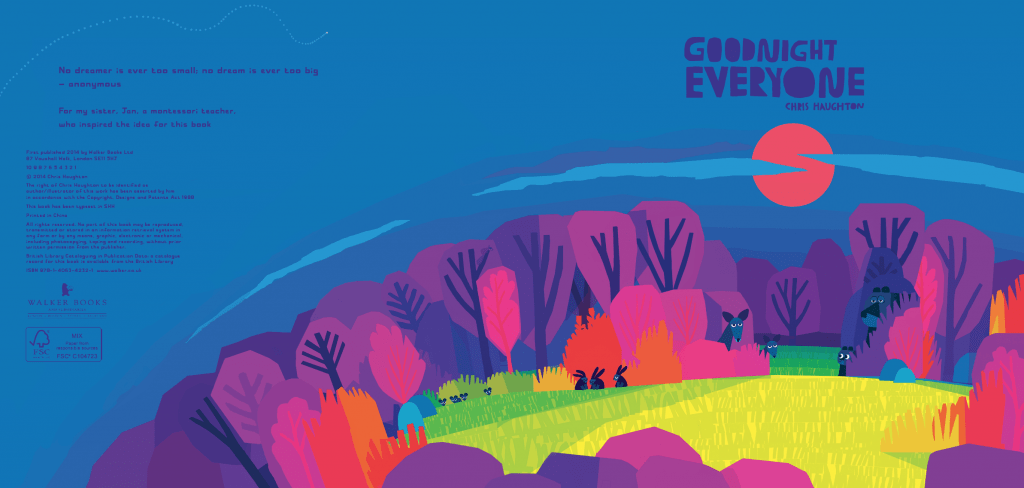


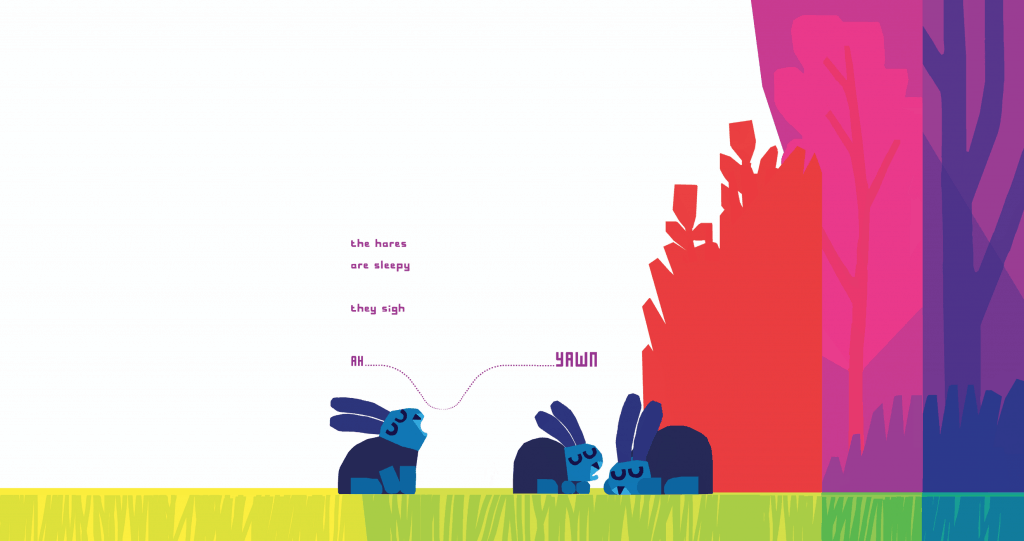
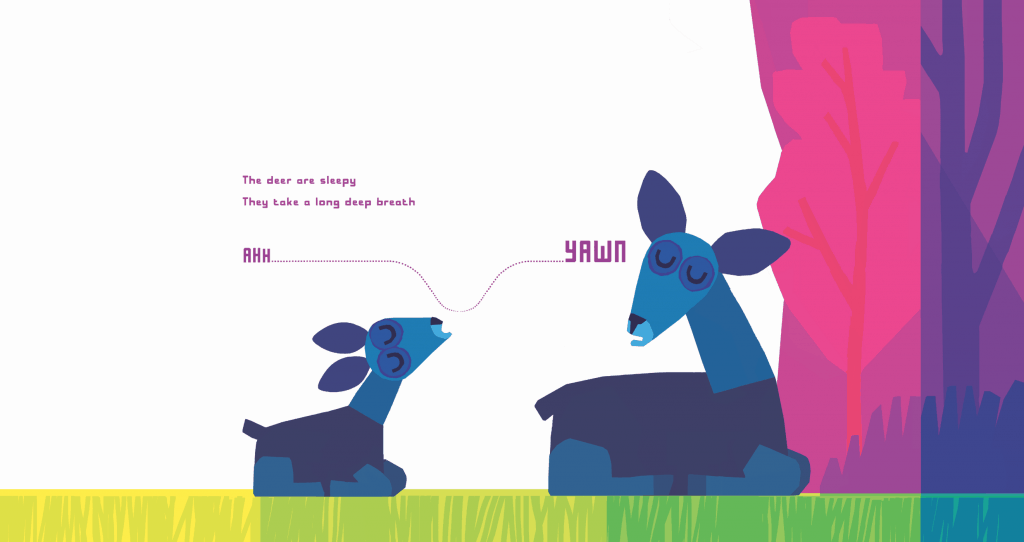
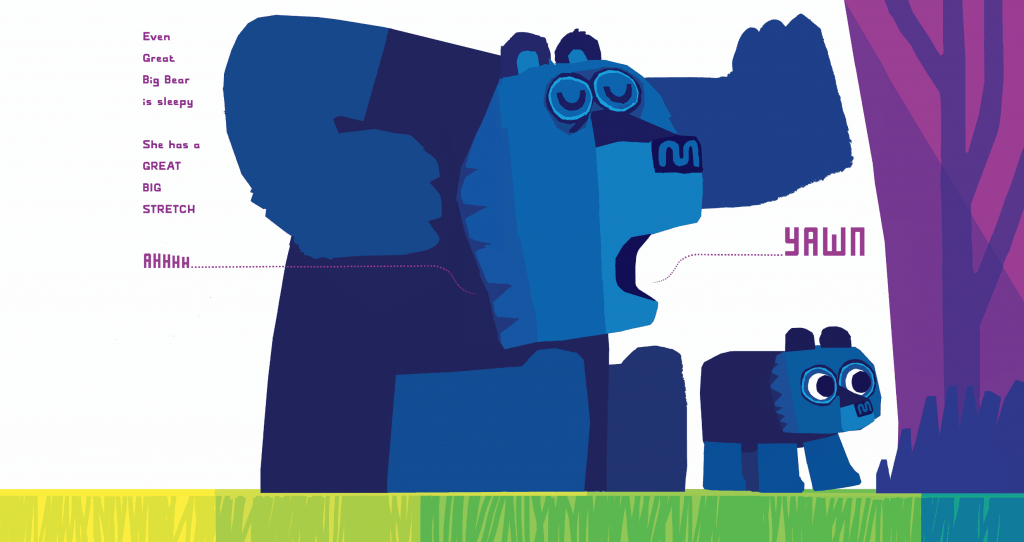
The book is a mirror of itself, each page on first sequence is turned to reveal the animals, the mice, the hares, the deer etc
And each page on the last sequence is on the verso and so the animals are covered with each turning page, almost as though they are being tucked in one by one.
The final sequence zooms out from the little sleeping mice to the whole of the night sky. On each page we say goodnight to each of the sleeping animals. A dandelion seed is dislodged by the snoring mice and passes from page to page and past the constellations on the endpapers to return to the beginning of the book and grow a new dandelion. It passes the quote at the beginning which reads ‘No dreamer is ever too small, no dream is ever too big’.
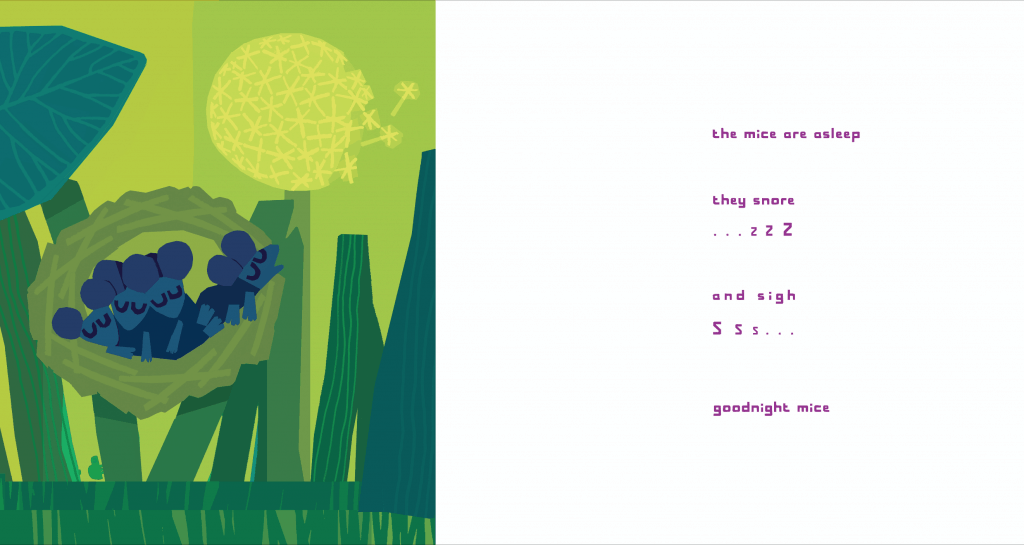


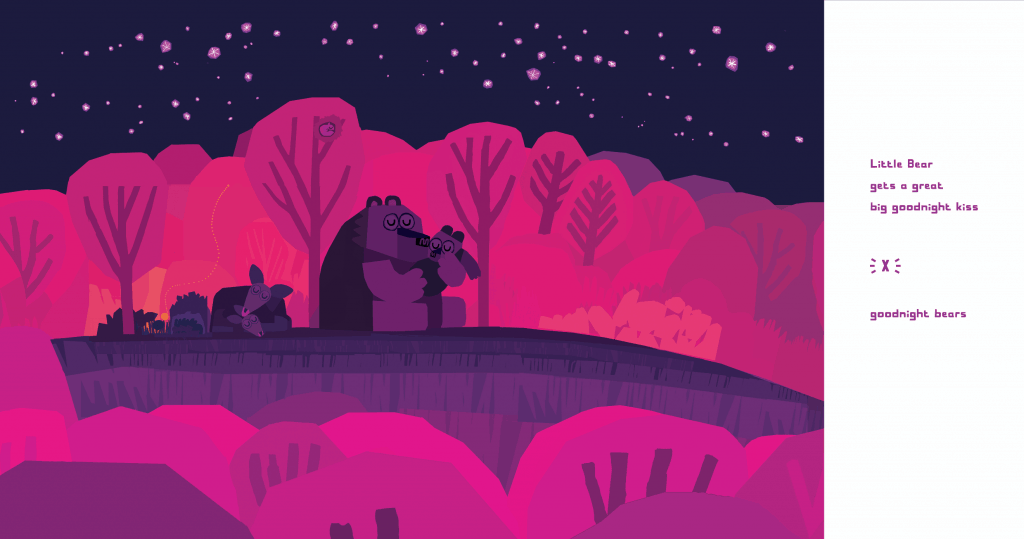
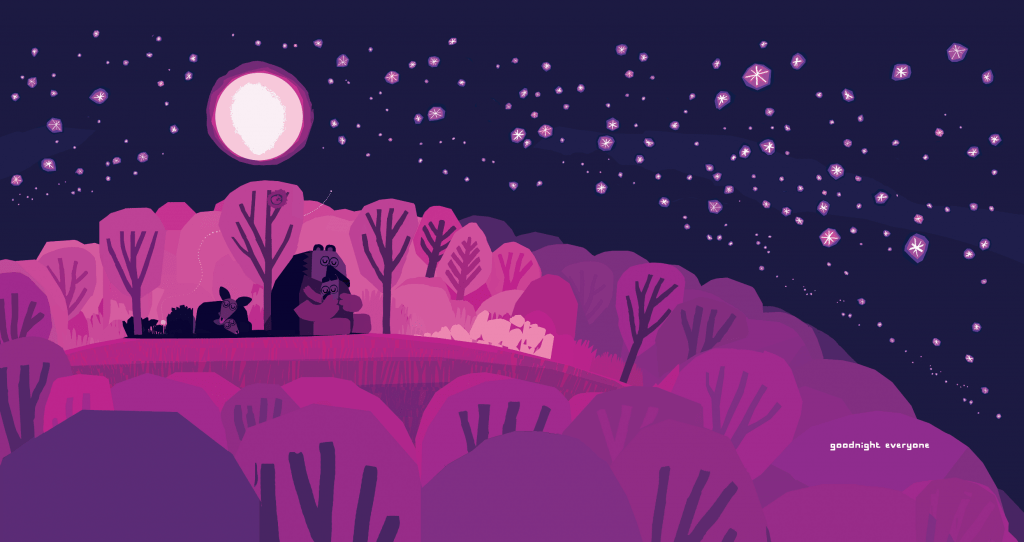
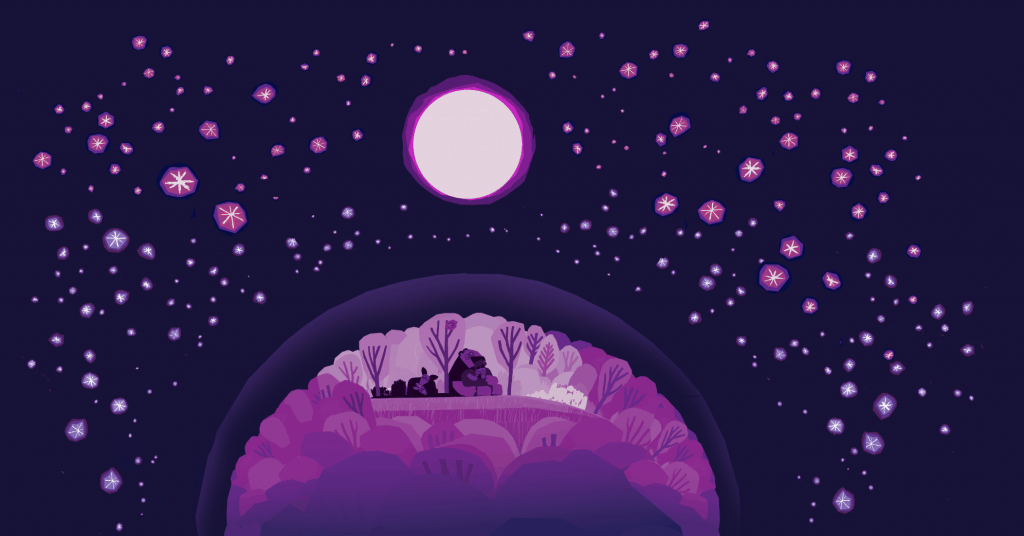
The ‘day time’ front endpaper is the southern night sky with the earth and the solar system seen from the south, you can see the antarctic. The ‘night time’ back endpaper is the northern night sky with the earth and solar system seen from the north, you can see the arctic. The book from beginning to end is a zoom through the earth as it turns from day to night.
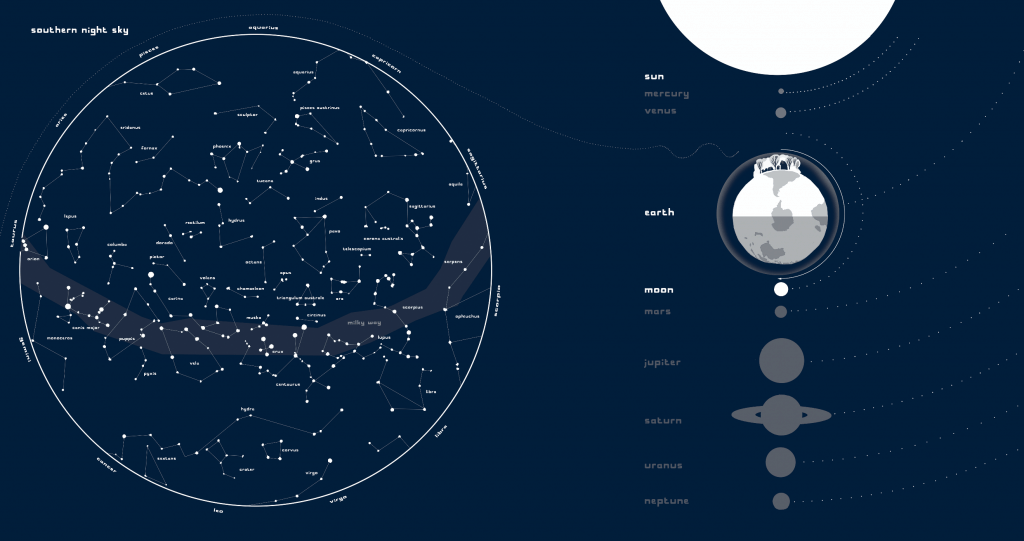
day time

night time
I am now building a version of this in 3D and I hope I can make a free app to explain night and day and the seasons as well as the solar system and the constellations. Coming soon!

GOODNIGHT EVERYONE comes out in the UK at the beginning of August. It comes out in other languages very soon too:
French: BONNE NUIT TOUT LE MONDE
Spanish: Buenas noches a todos
Catalan: Bona nit a tothom
Italian: Buonanotte a tutti!
Swedish: Godnatt allihop
Danish: Godnat allesammen
Dutch: Welterusten Allemaal
Norwegian: God natt alle sammen
Finnish: UNEN AIKA
German: Gute Nacht Allerseits
Russian: Всем спокойной ночи
Chinese/Japanese coming soon.
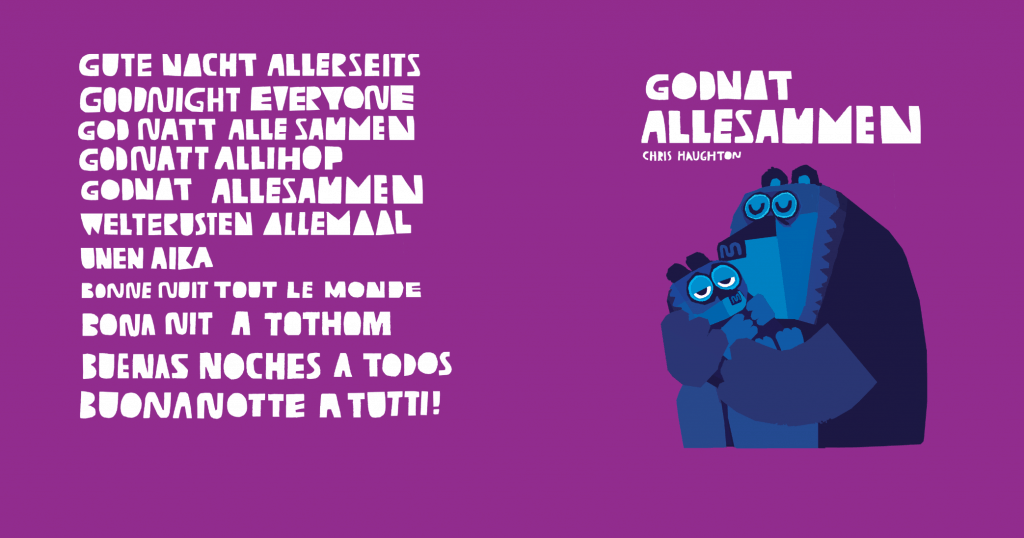
[…] Find out more about ‘Goodnight Everyone’ as Chris talks about the making of this delightful story and offers an insight into his illustrative pr… […]
[…] Published by Walker, you can find out the story behind the making of Goodnight Everyone on Chris’s Blog here… […]
[…] suo blog, a cui vi rimando, l’autore condivide con i lettori le riflessioni che lo hanno portato alla […]
[…] The making of GOODNIGHT EVERYONE […]
Thanks for explaining the background to the book. It really is a fantastic goodnight story that I’ve read to our little boy dozens of times (making him yawn in the process!). One of the best-designed and visually pleasing books we own – all categories.
I saw this book today for the first time.
I am delighted to read how this all evolved and see all the inspiration, returning to the seed idea and expanding out and back!
What really struck me first was the constellations on the endpapers. I look forward to the 3Dversion.
I wonder if all formats including board book have the constellations on the endpapers?